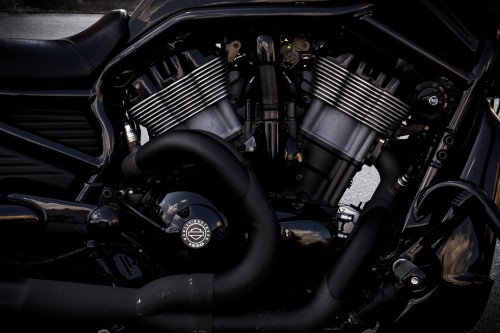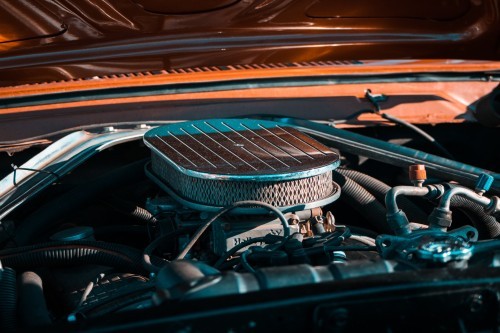An engine’s cooling system’s key fluid, coolant, is crucial for preserving ideal operating temperatures and avoiding overheating. Blue and green coolant are two popular colors that are frequently utilized in automobiles. Understanding the compatibility and potential repercussions of mixing various coolant types is essential for responsible car owners to guarantee the lifespan and effectiveness of the cooling system.
In general, it is not recommended to mix different types of coolant, even if they are both labeled as “coolant” and have different colors, such as blue and green. Coolants are formulated with specific additives and chemicals that are designed to work effectively within a certain temperature range and to prevent corrosion and cavitation in the cooling system.
We will review the effects of mixing blue and green coolant to determine if doing so is risk-free or harmful to the engine’s health. In addition to being a subject of maintenance, proper coolant management also serves as a way of preserving the health and efficiency of the engine.
Blue Coolant:
Ethylene glycol is frequently used as a basis in the formulation of blue coolants. It frequently has additives with fantastic heat transfer and anti-corrosion qualities. Advanced automobiles frequently utilize blue coolant, which was created to specifically satisfy the needs of more advanced engine technology. It provides longer service intervals and may effectively ward against freezing and overheating.
Green Coolant:
With specialized corrosion inhibitors, green coolant is often based on propylene or ethylene glycol. Because of its anti-corrosion and anti-rust properties, it has long been a popular option for older automobiles. As opposed to newer formulas, green coolant may need to be replaced more frequently. It is still a suitable alternative for some cars, especially those with more dated cooling systems.
Compatibility Check:
To maintain the efficient operation of your vehicle’s cooling system, it is essential to do a compatibility check before combining coolants. Combining unrelated coolants can result in chemical interactions, decreased cooling effectiveness, and even severe harm. To do a compatibility check, follow these steps:
Check the Vehicle Manual:
Consult the owner’s manual or maintenance manual for your car. Based on the engine type and model year, manufacturers often make coolant recommendations.
Identify Coolant Type:
Find out what kind and color of coolant is present in your car. You can choose a suitable coolant using the information provided.

What is the Need for Mixing Coolants?
In some circumstances, mixing coolants may be required to solve requirements or difficulties relating to vehicle performance and maintenance. The following are justifications for mixing coolants:
- Top-up or Replacement: Due to evaporation, leakage, or regular maintenance, coolant levels might drop over time. When filling out the coolant reservoir or replacing all of it, mixing coolants may be essential.
- Coolant Type Transition: Mixing may be required during the transition period if a vehicle is going from one type of coolant to another (for example, switching from green to blue coolant). This assists in the dilution of the old coolant and the gradual introduction of the new.
- Emergency Situations: To avoid overheating and engine damage in emergencies when the appropriate coolant type is not available, temporary coolant mixing may be used. However, it is advised to switch out the mixed coolant as soon as possible for the proper kind.
- Compatibility Issues: To preserve the proper balance and performance, certain cars may have leftover coolant from prior maintenance that must be combined with a suitable coolant.
- Universal Coolants: Universal coolants are created to function with a variety of coolant kinds and car models. To obtain the optimum performance and protection when utilizing universal coolants, mixing may be required.
Steps to Mix Blue and Green Coolant:
Using incompatible coolants can have negative effects, thus mixing blue and green coolant should be done with caution. But if you have decided that mixing is required in your circumstance, these are the procedures to take:
Gather Material:
- Blue and green coolant, both of which ought to be of the highest caliber and suitable for your car distilled water (if dilution is required).
Check Compatibility:
- Make sure the cooling systems of your car and the blue and green coolants are suitable. If unclear, check the owner’s handbook or a professional.
Drain the Old Coolant:
- Drain the radiator and cooling system’s remaining coolant in a secure manner. Observe the right disposal procedures for old coolant.
Flush the System (Optional but Recommended):
- Purge the cooling system with distilled water to help get rid of any leftover particles and old coolant. This procedure is particularly crucial when switching from one type of coolant to another.
Dilute the Coolants (if needed):
- For advice on the right mixing ratio, consult the manufacturer. To get the proper combination, you might need to dilute one or both blue and green coolants with distilled water if their concentrations differ.
Mix Coolants:
- Mix the blue and green coolants cautiously in the specified ratio in a clean container. Keep the original coolant containers clean by using a different container.
Refill the Cooling System:
- Make sure to fill the radiator and reservoir to the proper amount before adding the combined coolant. Do not overfill.
Bleed Air from the System:
- Start the engine and let it run with the radiator cap off. This helps release any trapped air from the cooling system.
- Gently rev the engine a few times to aid in air removal.
- Make sure the engine is operating at a consistent temperature by keeping an eye on the temperature indicator.
Dispose of Old Coolant Properly:
- Because coolant is poisonous and bad for the environment, dispose of it properly.

Potential Issues You May Encounter:
It is crucial to be informed of any potential issues and hazards before combining blue and green coolant or any other type of coolant. Mixing incompatible coolants can result in several problems that could impact the cooling system and engine performance of your car. Here are some issues to think about:
Chemical Reactions:
When several coolant types are combined, chemical reactions might occur that cause deposits, sludge, or gel-like materials to accumulate inside the cooling system. These buildups can impair coolant flow and decrease the effectiveness of heat transmission.
Corrosion and Erosion:
The corrosion inhibitors in coolant can be compromised by incompatible coolant combinations, increasing the susceptibility of metal components to rust and corrosion. The water pump, radiator, and other cooling system components may sustain damage.
Cooling Efficiency:
The system’s overall cooling effectiveness may be impacted by mixing coolants with distinct characteristics. Insufficient temperature regulation or overheating might result from an improper coolant combination.
Coolant Performance:
When combined, the qualities and additives in various coolant formulas could not function properly. Reduced freezing protection, an increase in boiling point, and a decreased capacity to resist scale formation can all be effects of this.
Costly Repairs:
Use of unsuitable coolants might eventually result in expensive repairs or engine damage, requiring the replacement of significant parts.
Reduced Longevity:
The possible wear and tear brought on by incompatible coolant combinations may jeopardize the overall service life of your cooling system and its components.
Frequently Asked Questions (FAQs):
Are blue and green coolants different from one another?
Yes, the coolants in blue and green are different. Modern engines utilize blue coolant, which is often made of ethylene glycol, whereas older vehicles are more likely to use green coolant, which is frequently made of propylene glycol.
What happens when green and blue are combined?
Combining green and blue coolants can result in chemical reactions, reduced cooling effectiveness, and potential damage to the cooling system.
Can I combine two types of coolant?
Due to probable reactions, decreased efficiency, and potential cooling system damage, mixing various coolant types is not advised.
Conclusion:
In conclusion, keeping a healthy and effective cooling system in your car requires a grasp of coolant types, compatibility, and potential issues caused by mixing various coolants. While combining blue and green coolants is possible in some circumstances, it is advised to follow manufacturer recommendations and consult experts to assure compatibility and avoid potential problems.
Using a universal coolant can offer adaptability, corrosion prevention, and longer service intervals if you are looking for a more straightforward strategy. Whatever option you decide on, regular coolant maintenance and attention to manufacturer guidelines can help keep the engine in your car operating smoothly and prolong its life.

